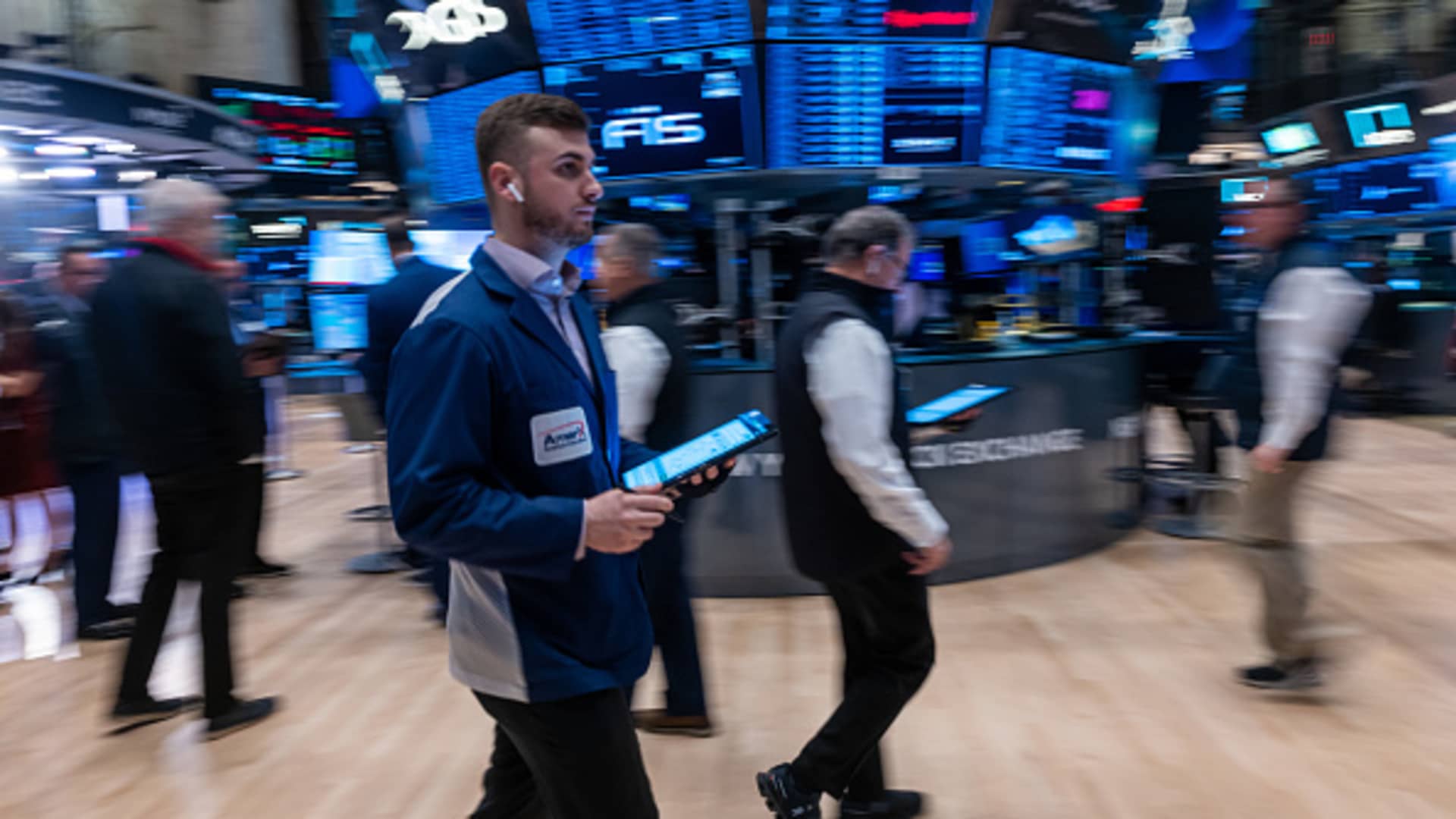Despite the heavy concentration of the U.S. market rally in expensive, AI-focused tech stocks, analysts say Wall Street is not yet in bubble territory.
The S&P 500 has climbed for 16 of the last 18 weeks and notched a new all-time closing high on Friday, but the gains have been heavily concentrated among the so-called “Magnificent 7” tech behemoths, led by skyrocketing Nvidia.
The U.S. Federal Reserve, meanwhile, is expected to begin cutting interest rates in June, potentially supplying a further boon to high-growth tech stocks.
The sheer scale and narrow nature of the bull run have evoked some concern about a market bubble, and UBS strategists on Wednesday drew comparisons with the late 1990s.
In January 1995, when the Fed finished a cycle of interest rate hikes that took the Fed funds rate to 6%, the S&P 500 started on a bull run that delivered over 27% in annualized returns over the next five-plus years.
Until the bubble burst spectacularly in March 2000.
“The 90s bull run saw two phases: a broad, steady climb from early ’95 to mid ’98, and then a narrower, more explosive phase from late ’98 to early ’00,” UBS Chief Strategist Bhanu Baweja and his team said in the research note.
“Today’s sectoral patterns, narrowness, correlations, are similar to the second phase of the market; valuations are not far off either.”
Yet despite the surface-level similarities, Baweja argued that “there’s no bubble ready to go pop,” and pointed to notable differences in earnings, realized margins, free cash flow, IPO and M&A activity, as well as signals from options markets.
While sector-specific enthusiasm is evident today, UBS highlighted that it is not based solely on hype as was the case for much of the dotcom bubble, but on actual shareholder returns.
The missing ingredient
The top 10 companies in the S&P 500 account for around 34% of the index’s total market cap, TS Lombard highlighted in a research note Monday.
The research firm argued this concentration is warranted given the stellar earnings of these firms.
“However, it does mean that it is hard for the overall index to rally significantly without the participation of the Tech sector, and it also means that the index is vulnerable to the risks idiosyncratic to these companies,” said Skylar Montgomery Koning, senior global macro strategist at TS Lombard.
Yet the Fed’s dovish pivot and resilient economic growth in recent months have enabled stock market breadth to improve, both in terms of sectors and geography, with both European and Japanese indexes hitting all-time highs over recent weeks.
What’s more, Montgomery Koning argued that the equity gains thus far are justified by fundamentals, namely the policy and growth outlook, along with a strong fourth-quarter earnings season.
She said that every stock market bubble needs three ingredients to inflate: a solid fundamental story, a compelling narrative for future growth, and liquidity, leverage or both. While the AI-driven bull run meets the first two criteria, Montgomery Koning said the third appears to be lacking.
“Liquidity is still ample, but leverage is not yet at worrying levels. QT has not resulted in shrinking liquidity in the US so far, as reverse repos (which absorb reserves) declined faster than the balance sheet. In fact, liquidity has been increasing somewhat since the start of last year (there is a risk that 2024 Fed cuts will add to the froth),” she said.
“But leverage doesn’t look worrying; margin debt and options open interest suggest that it’s not speculation driving the rally. There has been a small rise in margin debt but nowhere near the highs of 2020.”
The bad news?
The absence of a bubble does not necessarily imply that the market will continue to rise, UBS pointed out, with Baweja noting that productivity growth looks “nothing like it did in the 1990s.”
“Sure, this can change, but data today on electronics and info tech orders, capex intentions and actual capex doesn’t at all suggest the capital deepening associated with a productivity boost,” he said.
“Our metric of globalisation shows it is stalled (weakening, actually) compared to the late 1990s, when it grew the fastest. The economy is late cycle today.”
The current configuration of the economy is closest to that seen at the end of the 90s bull run and into early 2000, UBS believes, with real disposable income growth “weak and likely to get weaker. Baweja suggested that these variables need to start looking rosier in order for the bull run to persist sustainably.
